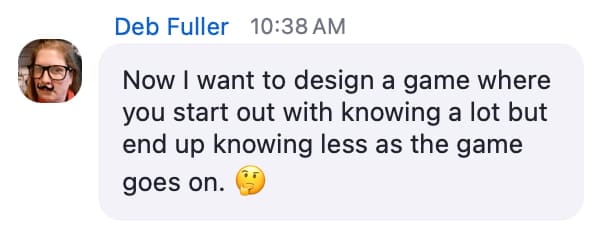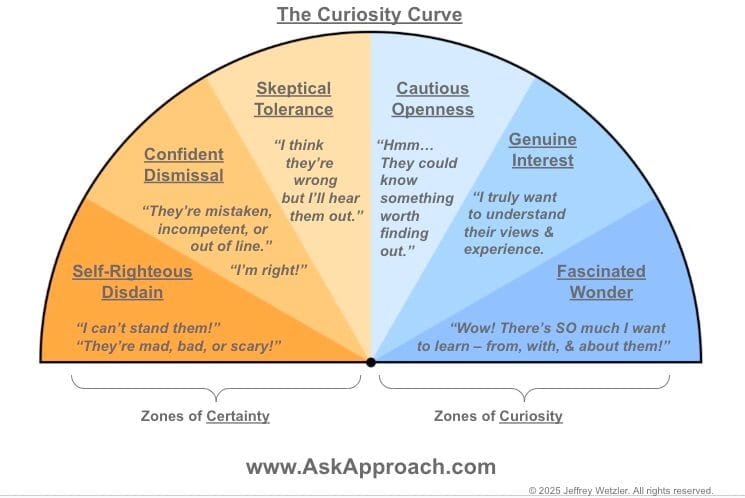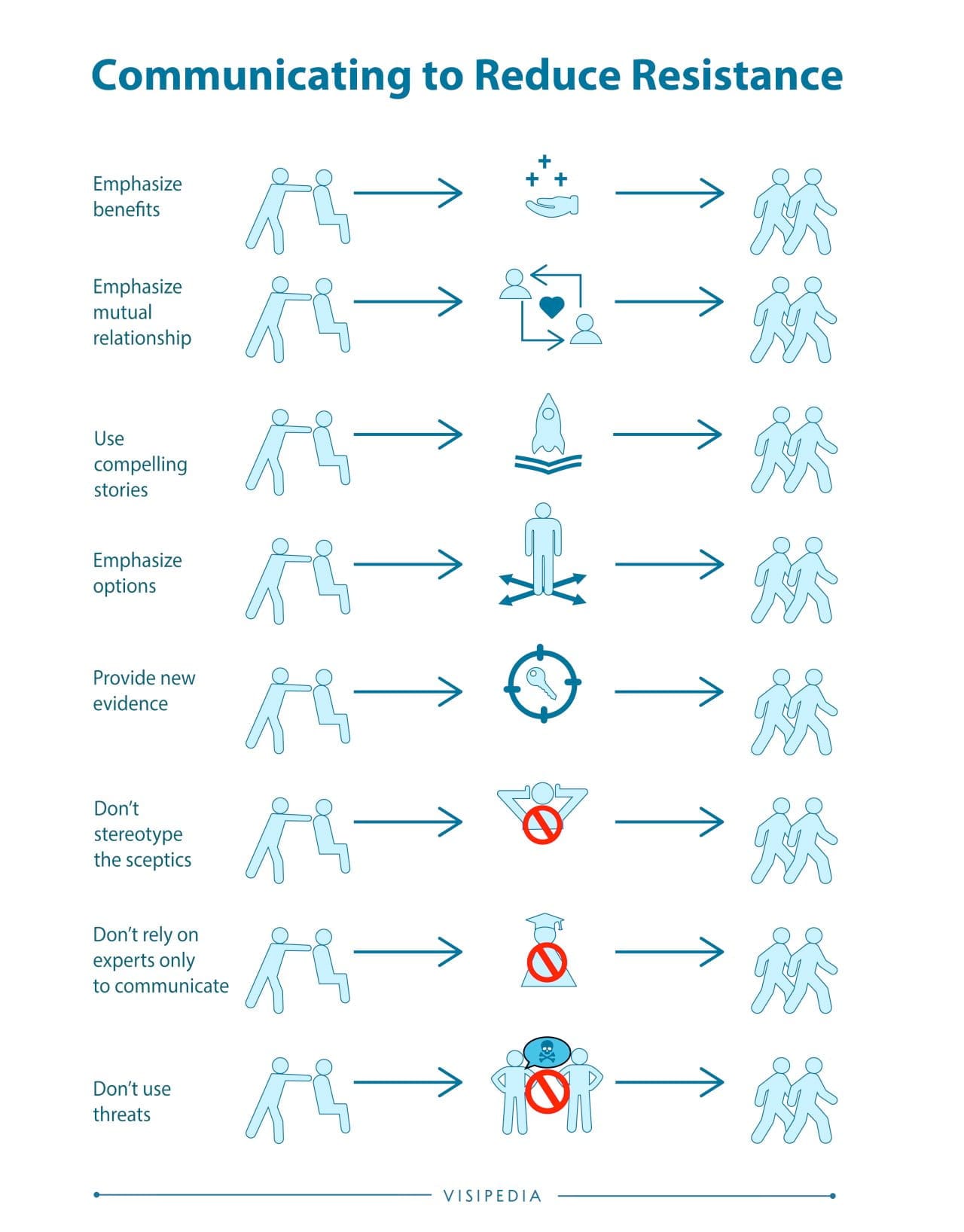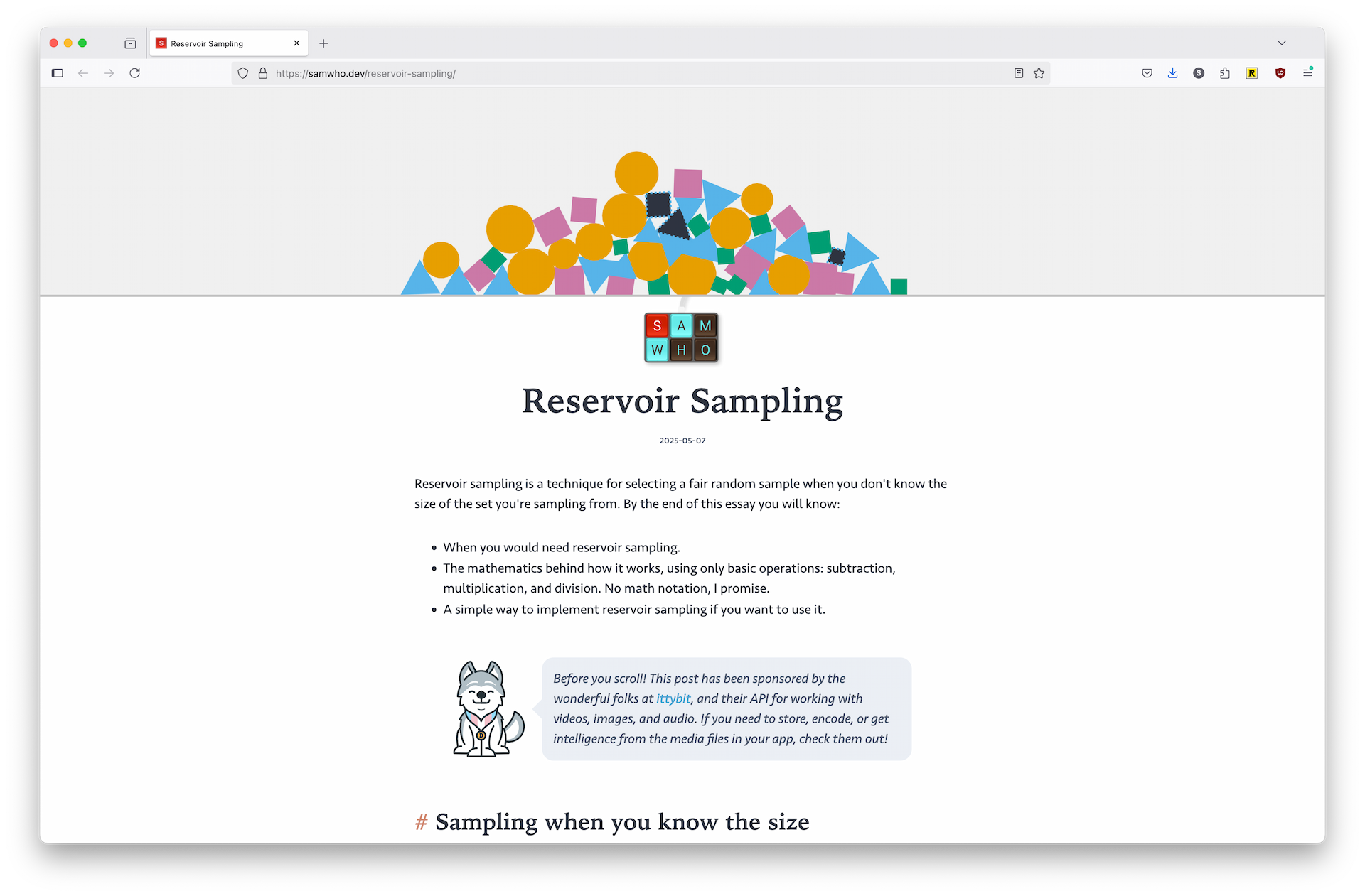№ 96 | Cards for Uncertainty, The Curiosity Curve, Communicating to Reduce Resistance, Envisioning Cards, Scrutinizing “Best Practices”, Nick Sousanis on Due Process, and Reservoir Sampling

Welcome to issue № 96 of the Thinking Things newsletter, your regular roundup of playful ‘things to think with’ and think about…
Cards for Uncertainty
I want to kick things off with a question to think with, asked by Zbigniew Janczukowicz at the last Cardstock meetup, a question that left us all thinking 🤔. I’ll paraphrase:
Most (all?) card decks take us from not-knowing to knowing. What card decks do the opposite—take us from knowing (or thinking we know) to uncertainty?
You might ask ‘why would this be valuable?’ While there are many problems that stem from not understanding, it is also true that many of our problems stem from overconfidence, and believing we know the answer.
Short of the rare question for reflection that gives us pause, we couldn’t—in the moment—list a (learning) card deck that does exactly this: takes us from thinking we know, to learning we don’t know. In retrospect, I might cite something like Dan Brown’s Surviving Design Projects game, as that can help players see that things are more complex than initially assumed. But… To fully embrace the question, I’m thinking about possible card games that could be designed to challenge deeply held (or unscrutinized) beliefs, with the purpose of leading to uncertainty. Or maybe a game that adds layers of information, until players are left bewildered by the complexity (or chaos) of it all. You know, like real life!

Speaking of uncertainty…
The Curiosity Curve
Be curious, not furious.
Seek first to understand.
How do you know?
When did you first come to this conclusion?
Fish for positive intent.
Accommodation vs assimilation of new information.
I have all kinds of questions and catch phrases related to slowing down to understand perspectives other than our own, especially where there is conflict. Unfortunately, there’s often an implied binary distinction in these sentiments, which is partly why I like The Curiosity Curve from Jeff Wetzler—it’s a spectrum of possible stances, from ‘Self-Righteous Disdain’ to ‘Fascinated Wonder’. I could see this used for self-reflection on a specific issue, or maybe as a game board for homogenous teams to address ‘us vs them’ issues. Or… 🤔 It’s open to all kinds of uses!

I found this via Harry Max, who offers this lovely characterization:
If "Humble Inquiry" by Edgar Schein and "Gradients of Agreement" by Sam Kaner had a baby...
Love it!
Communicating to Reduce Resistance
When it comes to change, and reflecting on resistance to change, the Four Forces of Progress model (from JTBD) is something I often share. So naturally, when I came across this wonderfully sarcastic LinkedIn post describing communication strategies to reduce resistance, I had to see how this compared. Good thing, they complement each other well! I could see a mashup of these, where different communication strategies (as cards) could be used to address areas of the Four Forces diagram (the game board).

This gets bonus points for introducing me to PRT (Psychological reactance theory) and this 2016 paper: A 50-year review of psychological reactance theory: Do not read this article (PDF).
Envisioning Cards
At some point, our excitement with chasing bright, shiny objects gives way to thinking more about timeless needs and those things to change more slowly (at least, that’s been my trajectory!). For these kinds of deeper themes, I really appreciate the content in the Envisioning Cards, a card deck created to “cover many issues and concerns related to the design of sociotechnical systems.”

Drawing on almost twenty years of work in value sensitive design, the Envisioning Cards are built upon a set of five envisioning criteria: stakeholders, time, values, pervasiveness, and multi-lifespan design.
Scrutinizing “Best Practices”
I was working at a cafe earlier this week, where I overheard someone asking “is this a rule or best practice?” I like that distinction. And while I—like the person I overheard—think of best practices as potentially useful patterns, it appears that some people use these to end conversations, something Josh Clark recently wrote about:
I see people use "best practice" to end conversations. They'll point to a solution and say, "this is best practice." Done, settled. It's a power move, even with the best intentions. I've certainly done it.
With time, I've come to think of established practice as a starting point, not an end point. In product design—especially when you're envisioning the next generation—best practice should be a point of curiosity, not closure.
I like this “best practice ladder” Josh offers up, as a way of further refining and thinking about the types and usefulness of best practices.

Nick Sousanis on Due Process
Comics as things to think with! I absolutely love this single page comic from Nick Sousanis “on the origins of Due Process, how fundamental it is to our very notion of freedom, and how we all must stand up for the rights for any one of us to preserve liberty for all of us.” It’s crazy that we live in a time when we have to revisit these fundamental ideas, and remind people why they are critical for all of us.

Reservoir Sampling
Hey, it’s been a minute since I shared an interactive web page, yes? Here’s a recent post that explains reservoir sampling, “a technique for selecting a fair random sample when you don't know the size of the set you're sampling from.”

Random Things:
- ♟️ Check out this timeline of chess piece designs through history.
- 🤣 This AI satire from McSweeneys is 🔥! “A Company Reminder for Everyone to Talk Nicely About the Giant Plagiarism Machine.”
- 🪵 There are some really cool things in this roundup of ‘happy future stuff’, including this wood that’s stronger than steel.
- 📕 I’m intrigued by this new book Other Networks: A Radical Technology Sourcebook. The production quality looks amazing, but I'm really curious about its’ function as a “speculative index of communications networks that existed before or outside of the internet.”
.
.
.
✨Hey, we’re inching ever closer to an extra special issue № 100!✨

